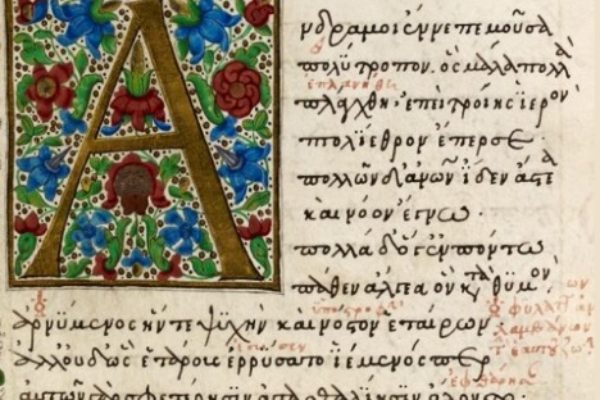
Deborah Beck is an expert in the use of language in Greek poetry. Her book “Speech Presentation in Homeric Epic” was the first systematic examination of all the speeches in the “Iliad” and the “Odyssey.”
When she was preparing her book in 2012, her publisher suggested she make the extensive database she had created available to the public online.
Since then, more than 5,000 scholars have used the database to address a wide range of innovative questions related to speeches in the “Iliad” and the “Odyssey.”
“I get emails from people around the world expressing their appreciation,” said Beck, an associate professor of classics at The University of Texas at Austin. “I heard in June from a student in Mexico who used the application to write his bachelor’s thesis.”

Beck was proud of the digital humanities research potential for her project, but she was finding it hard to update the application in response to changing web technologies. In fact, as browsers change and web servers retire, there was a chance that in the future the database might be lost. That got her thinking: What is the future of preservation in a world that is increasingly more digital?
“For classicists, the very long-term accessibility of texts is a fundamental prerequisite of our entire discipline,” Beck explained. “I can pick up a manuscript from 1,000 years ago, and if I know how to read the handwriting, that resource is still available to me. However, I don’t have the slightest idea what the availability of our current digital resources will be in 100 years.”
She asked for assistance from researchers at the Texas Advanced Computing Center (TACC) with expertise in digital preservation. Together, they set about developing a new way to preserve digital humanities databases.

At the 2017 ACM/IEEE Joint Conference on Digital Libraries (JCDL), the team presented a new preservation method for Beck’s database of Homeric speeches, including the connections among the texts and the insights Beck developed over years of study.
“The value of research data not only resides in the content but in how it is made available to users,” said Maria Esteva, a digital archivist at TACC. “Research data is often presented interactively through a web application, the design of which is the fruit of years of work by researchers. Therefore, preserving the data and the application’s functionalities becomes equally important.”
The preservation strategy is twofold. It allows scholars to relaunch the web code and the database in a variety of environments — from individual computers, to virtual machines, to future web servers — without compromising its interactive features. It also preserves the data separately from the interactive application, so scholars can reuse data in new contexts.
The team is currently working to generalize the tool for all kinds of databases by automating aspects of the preservation strategy.
“Having an interactive, accessible digital component to your research means that it reaches more people and reaches them in different ways,” Beck said. “That to me is really important. With an effective preservation strategy in place, we can achieve that over a longer period of time with a wider variety of users.”





